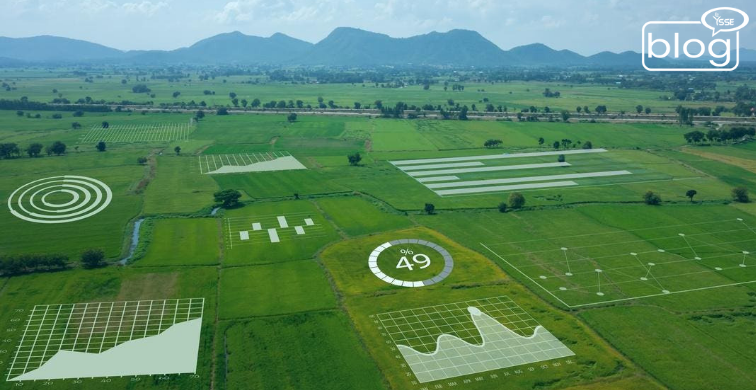Imagine crops whispering their demands, robots relentlessly tilling fields, and smartphone calendar-accurate weather forecasts. AI-powered agriculture is the future. Due to population growth and climate change, conventional farming methods are under strain. AI may save the agricultural sector and keep our plates full in the coming dawn.
Can AI genuinely transform agriculture and sustain our food systems? The solution is how well we use technology. Five ways AI will change food production:
1. From Guesswork to Data-Driven Farming
Farmer judgments have been based on experience and intuition for generations. AI is revolutionizing precision farming, yet these traits remain valuable. A network of soil sensors might collect real-time data on moisture, nutritional composition, and plant health. This data is analyzed by AI systems to determine the field’s needs. This allows farmers to make intelligent irrigation, fertilization, and other decisions. Precision decreases waste, environmental effect, and produces healthier, higher-yielding crops. Give farmers a customized success plan for each square foot of land.
2. Pest and disease control: early detection improves protection
Traditionally, farmers identified pests and diseases by sight and experience. Unfortunately, this reactionary technique typically destroys crops. AI-powered picture identification is revolutionizing. Drones with high-resolution cameras photograph fields. These photos are analyzed by AI systems to detect early infestations and diseases. Early detection helps farmers target insect control, reducing damage and improving harvests. Imagine an army of AI scouts roaming your crops 24/7, looking for hazards before they can cause damage.
3. Agrobots Grow: Automating Tasks for Efficiency
Agricultural labor shortages are longstanding. Potential solutions include AI-powered robots. Sensor-equipped robots led by AI algorithms can automate weeding, planting, and harvesting. This increases efficiency, accuracy, and frees up human labor for more difficult jobs. Think of a fleet of robots carefully weeding around delicate seedlings or gathering ripe crops with farmers. Agrobots can labor all night to fulfill important jobs on time and well.
4. Weather Forecasting using AI: Climate Change Resilience
Climate change-induced weather extremes threaten agriculture. Weather forecasting models using AI are improving. The models use historical data, real-time weather measurements, and climate projections to make hyper-local, precise forecasts. This knowledge allows farmers to schedule planting dates and employ irrigation to mitigate unpredictable weather events. Imagine getting a farm-specific weather forecast to plan ahead and reduce crop failures from storms or droughts.
5. Waste Reduction through Supply Chain Optimization
Food waste and loss plague agriculture. Logistics and supply chain management solutions powered by AI can optimize food delivery. They forecast demand, assess market trends, and optimize transportation routes. This prevents rotting, ensures food arrives fresh, and saves food supply chain waste. If AI could estimate how much lettuce a grocery shop will require next week, fresh produce would reach consumers without rotting or waste.
Going Forward: AI for Sustainability
AI will improve agriculture’s sustainability and productivity. Challenges persist. AI implementation costs can deter small farmers. Additionally, geographically equal access to AI-powered tools is essential. Governments, academic institutes, and private enterprises must collaborate to close the digital divide and make AI available to farmers.
Agriculture will be greatly affected by AI technology. With these advancements, we can create a future where food production is efficient, environmentally friendly, and able to feed a growing population.
to see more blogs, click here.
Writer,
Khairul Islam Shovo
Intern,Content Writing Department
YSSE

